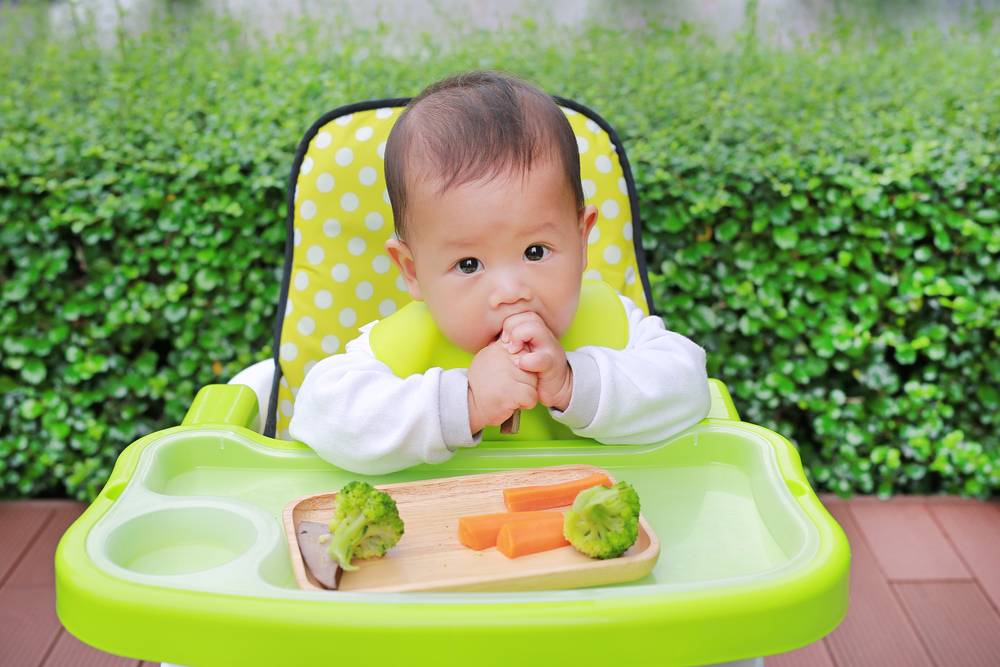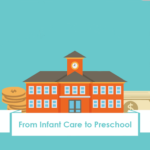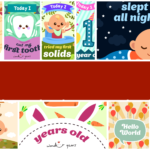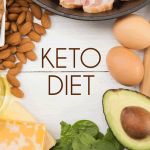
When your baby is around six months old, he may be ready for solid food.
Traditionally, babies are spoon fed by their caregivers until the caregivers believe that your baby has had enough. However, more and more parents appear to be adopting the baby-led weaning method nowadays.
What is baby-led weaning
Baby-led weaning is the way of introducing solid food to your baby by placing them within reach for baby to self-feed with their hands, as opposed to being fed their food traditionally.
This method bypasses purees and requires your baby himself to decide what to eat, when they want to eat and how much food they will eat.
Benefits of baby-led weaning
Baby-led weaning is popular not without reasons and here are some of them.
True enjoyment of food
Baby-led weaning gives your baby the opportunity to decide what food to put in his own mouth, rather than have it decided by caregivers.
Exploring textures and taste own their own gives them the opportunity to truly appreciate their food, rather than eat for the sake of being fed.
Some parents report that this allows them to bring up children who are not picky with their food.
Better Eating Habits
Your baby will learn to listen to their own bodies and stop eating when he has had enough – your baby will never feel that he is being forced to eat. This will enable him to develop a healthier relationship with food.
Less likely to have allergies
Baby-led weaning may help your baby develop more varied food preferences in the long run and some studies claim that this will reduce the likelihood of food allergies.
Less likely to be overweight
When your baby is allowed to self regulate, he will not eat more than he needs and this reduces the likelihood of overeating and obesity.
Development of coordination & chewing skills
Handling food by himself gives your baby more opportunities to fine tune his motor skills. Chewing on solid foods also helps jaw movement developments, which helps with your baby’s progress in speech.
Less food preparation
Unlike traditional weaning, baby-led weaning does not require caregivers to prepare separate meals, such as purees or mashed up food for your baby. You can simply serve a similar version of your food in a baby-safe manner.
Downsides of baby-led weaning
As with almost everything in life, baby-led weaning comes with its own share of downside as well.
Messy
It will definitely be a messy affair getting your baby, who is only beginning to develop his motor and coordination skills, to eat on his own and with his own hands. Caregivers often have a huge mess to clean up after each baby-led meal.
Inadequate nutrition
Especially at the beginning, your baby may not have the ability to eat a lot or pick adequate food to meet their nutritional needs. Hence, caregivers have to be able to monitor what your baby eats and adjust the type of food offered, or supplement his diet.
Food temperature
Each baby-led meal is likely to take longer and may have to be served at a lower temperature than if they were being fed. This means that food may turn cold faster than desired.
Safety issues
There are risks, such as baby choking on his food, if caregivers are not aware or diligent in ensuring safety in conducting baby-led weaning.
Baby-led weaning safety
Baby-led weaning safety measures are necessary to ensure that mealtime with your baby is less stressful. Here are some baby-led weaning safety tips for your information.
Be correctly sized
Solid food offered to your baby must always be sized such that it will not become a choking hazard to him. Thick sticks or strips are unlikely to choke and are also good for babies to grip on.
Be secure
Have your baby sit upright in a secure chair or seat, so that any food he put in his mouth will be taken upright and any unexpected reactions to the food can take place without safety concerns.
Be knowledgeable
Some foods, such as honey, are not to be given to your baby until he reaches a certain age. Also, avoid serving foods that are choking hazards, including nuts, fruits with skin and small round fruits such as grapes and cherries.
Be watchful
Always have a caregiver around to watch your baby when he is having a baby-led meal in case of unexpected events and accidents. Caregivers should at least have some basic knowledge of how to recognise gagging and choking and how to help your baby if it should happen.
How to get started on baby-led weaning
The tools you will need to initiate a baby-led meal vary according to your comfort level. They may include things like a high chair with safety features, a bib, a table or plate from which your baby can pick up his food.
Some parents prefer to lay some kind of protection over the floor to make cleaning up easier.
The idea of baby-led weaning rests largely on providing a good variety of foods for their consumption. Some examples of the food your may wish to introduce to your baby are as follows.
- Steamed vegetables such as broccoli florets, carrots, cucumber or zucchini.
- Soft raw fruits like mangoes, bananas, peaches, ripe pears, melons, avocados, steamed apples, potatoes and large strawberries.
- Boiled eggs
- Soft meat and deboned fish
Be sure to be diligent with baby-led weaning safety if you do decide to try it out.
Some parents find baby-led weaning to be stressful or too much work for their baby’s caregivers while others may prefer to adopt a mixture of traditional and baby-led weaning. What works for your baby and the configuration of your family is the best way to go when it comes to your baby’s meals.























